The exact route we take from the Dominican Republic to Nassau will depend on the wind angles and weather at the time. Your skipper will work with the crew to choose the best plan and together the crew can pick from a range of stunning stops along the way. We expect that there will be a mix of day sailing and one or two longer passages sailing through the night under the Caribbean stars. This is a list of some of the best loved highlights that we can build a route from.
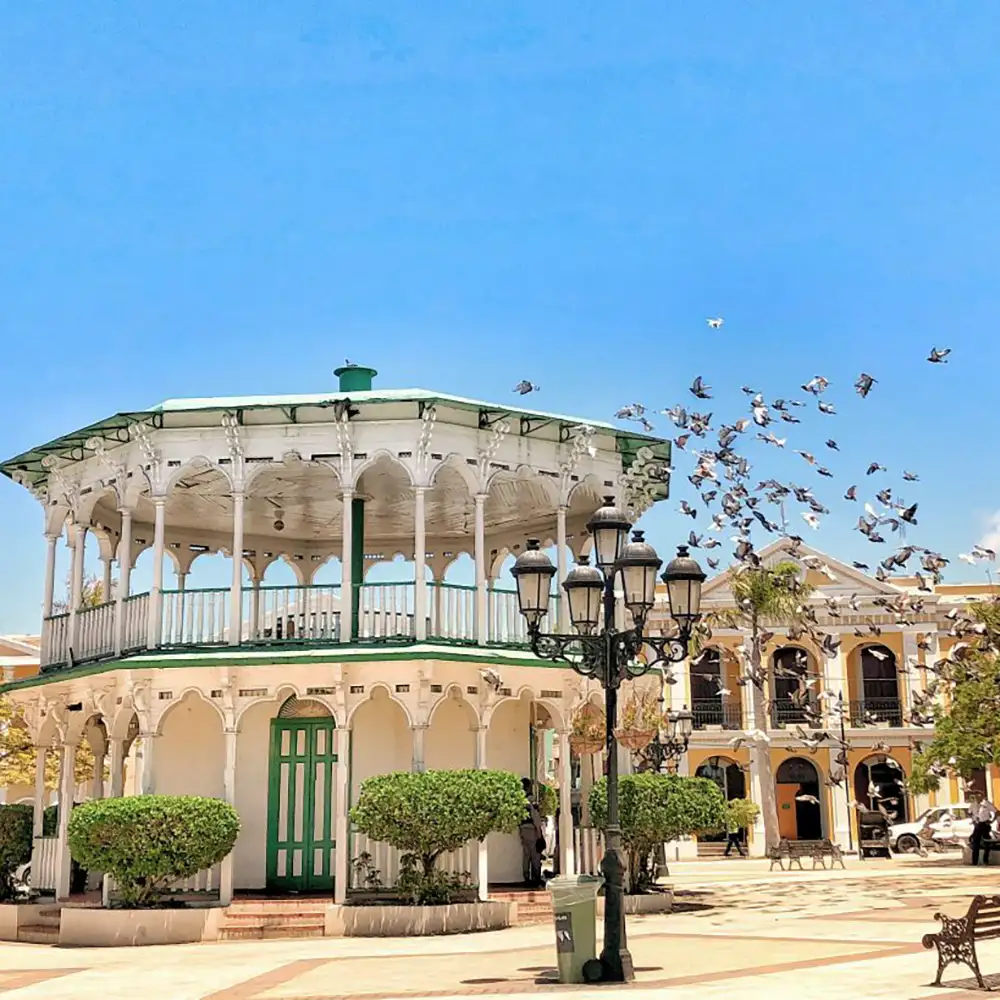
Luperón Bay
Luperón Bay is regarded as the most important and naturally beautiful harbor in the entire Caribbean. Nestled between mangroves and lush green hills, this beautiful bay provides exceptional protection and calm waters, making it a favorite among sailors. Nearby, the golden sands of Playa Grande are just a short ride from the marina, offering a perfect spot to relax. For those interested in history, a visit to La Isabela, the first Spanish settlement in the Americas, provides a fascinating glimpse into the region’s past.
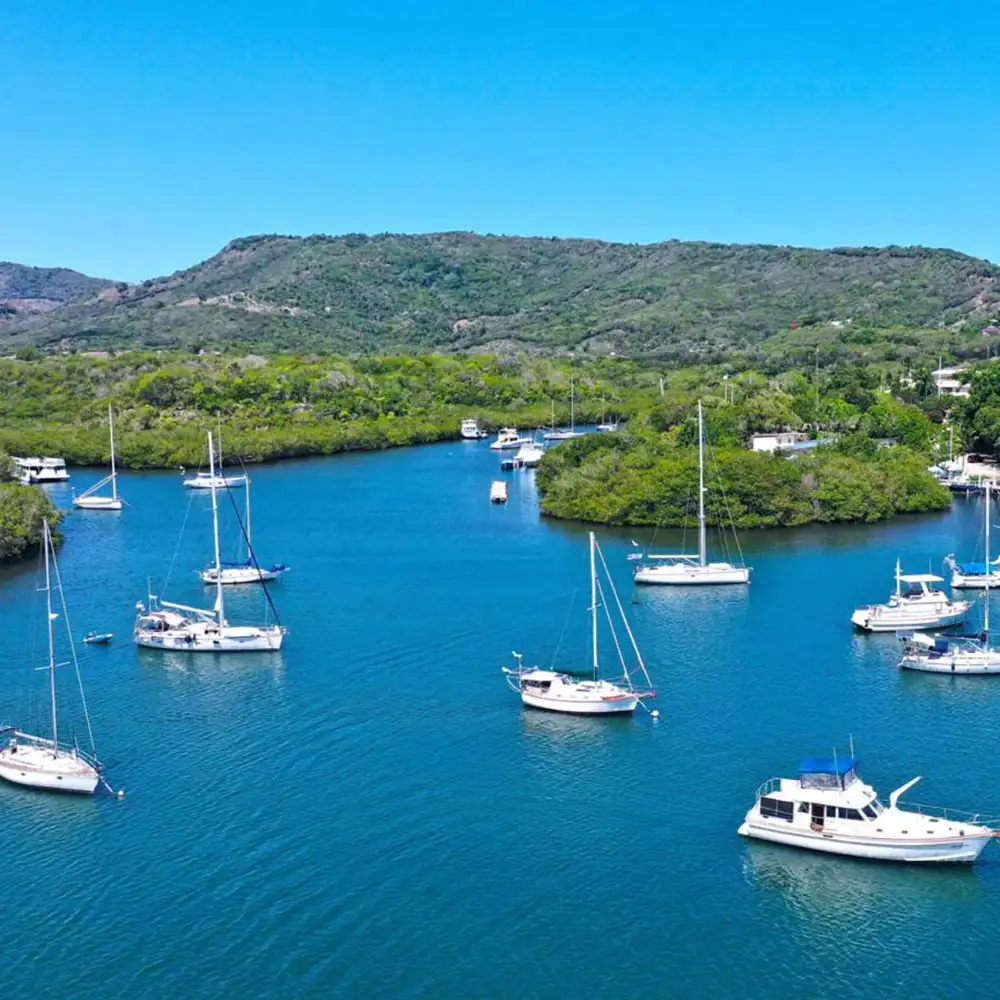
Great Inagua
The southernmost island of the Bahamas, Great Inagua lies closer to Cuba and Haiti than it does to Nassau. Dry, flat, and wind-swept, it feels very different from the low cays and shallow banks further north. It is home to one of the largest flamingo colonies in the world with tens of thousands of pink birds feeding and nesting in the island’s vast shallow lakes. Parrots, herons, and pelicans are also common. The beaches here run for miles, often without another footprint, and the surrounding waters are deep and amazingly clear.
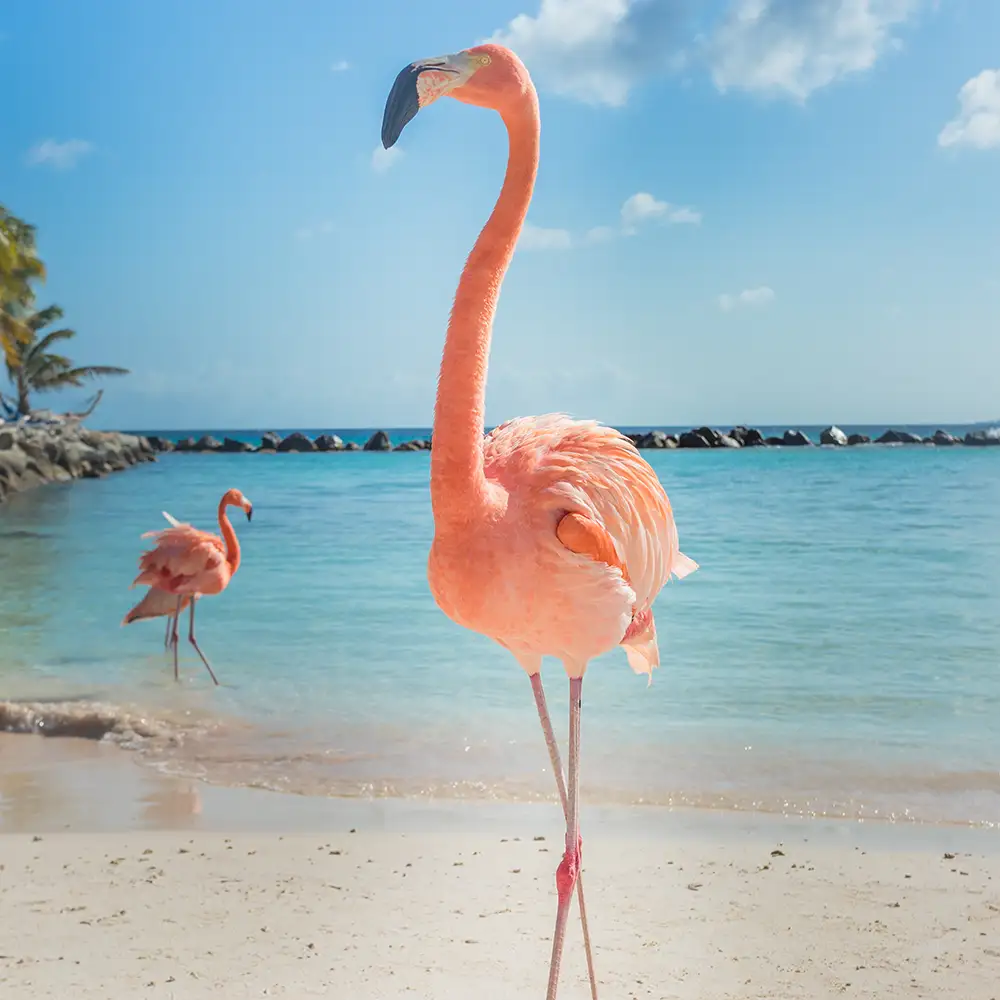
Hogsty Reef
Hogsty Reef is a Caribbean anomaly being one of only three true atolls in the entire western hemisphere. Rising from 6,000 feet of ocean to break the surface in the middle of nowhere, it forms a perfect ring-shaped reef enclosing a shallow lagoon. Scientists believe atolls form from extinct volcanoes that subside over time, leaving only the reef behind, making Hogsty’s presence in the otherwise non-volcanic Bahamas all the more remarkable. The reef has claimed its share of ships over the years, with two wrecks visible above the water and another resting in just 25 feet. In calm weather, the water is so clear you can see coral heads, sandy patches, and the sharp outlines of the wrecks from the deck. The coral walls here are alive with colour with sponges, fans, and shoals of reef fish.

Turks and Caicos Islands
The Turks and Caicos are a string of low-lying islands and cays, ringed by dazzling shallows and deep-blue drop-offs. If the wind takes us here, likely stops are Grand Turk, South Caicos, or Providenciales (“Provo”). Smaller islands like Grand Turk feel quite untouched by time with streets lined with old colonial buildings, donkeys wandering by, and quiet local bars serving the much loved cold Turks Head beer. Offshore, the water here is rich with life: turtles grazing in the seagrass, eagle rays gliding over the reef edge, and wrecks that tell of the islands’ long history at the crossroads of Atlantic trade.
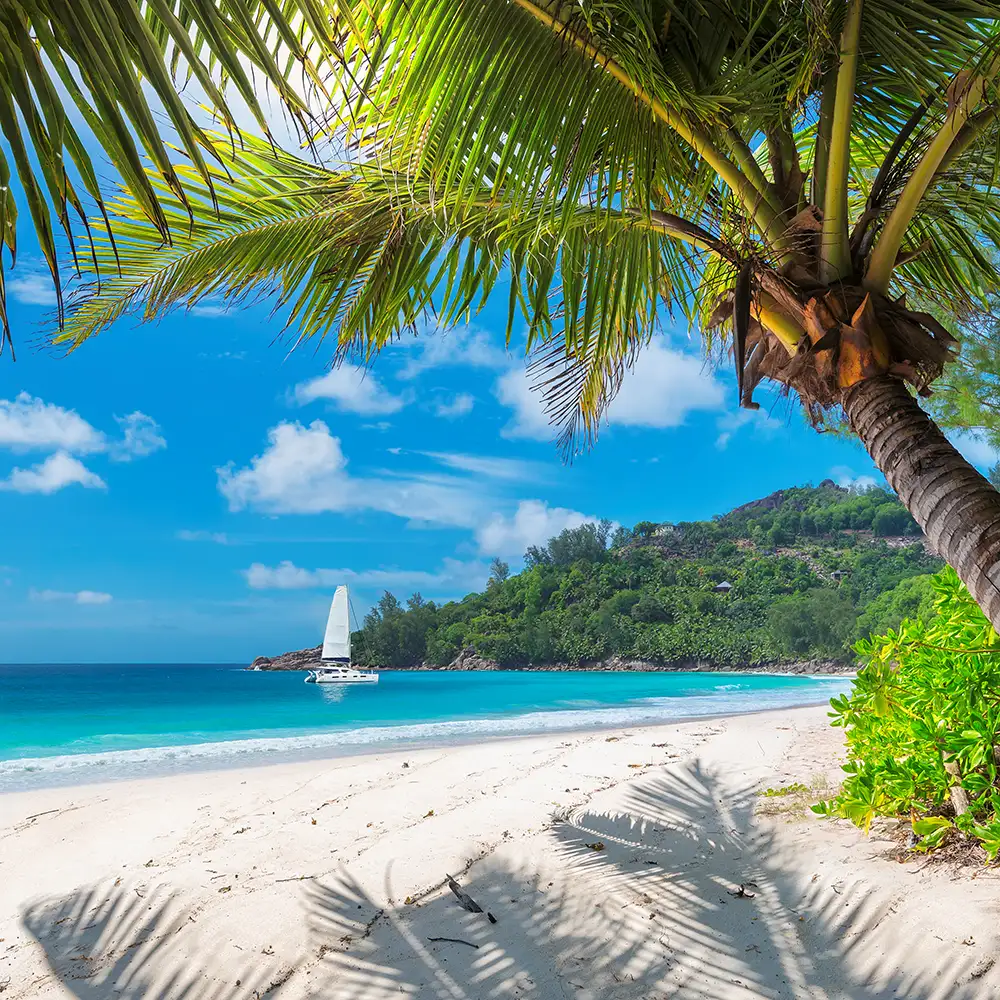
Acklins and Crooked Islands
A thin arc of land curves around these shallow banks, sheltering some of the most untouched waters in the Bahamas. Life here is unhurried with just a scattering of small settlements, fishing skiffs pulled up on the sand, and long stretches of beach with no one else in sight.Tthere are only a handful of places to anchor, like French Wells or the edge of the Bight of Acklins, and reaching them means careful navigation in good light so only possible when the weather is very settled. if we make it here, you’ll have the feeling that you’ve reached the outer edge of the world. It’s remote, beautiful, but entirely on nature’s terms.
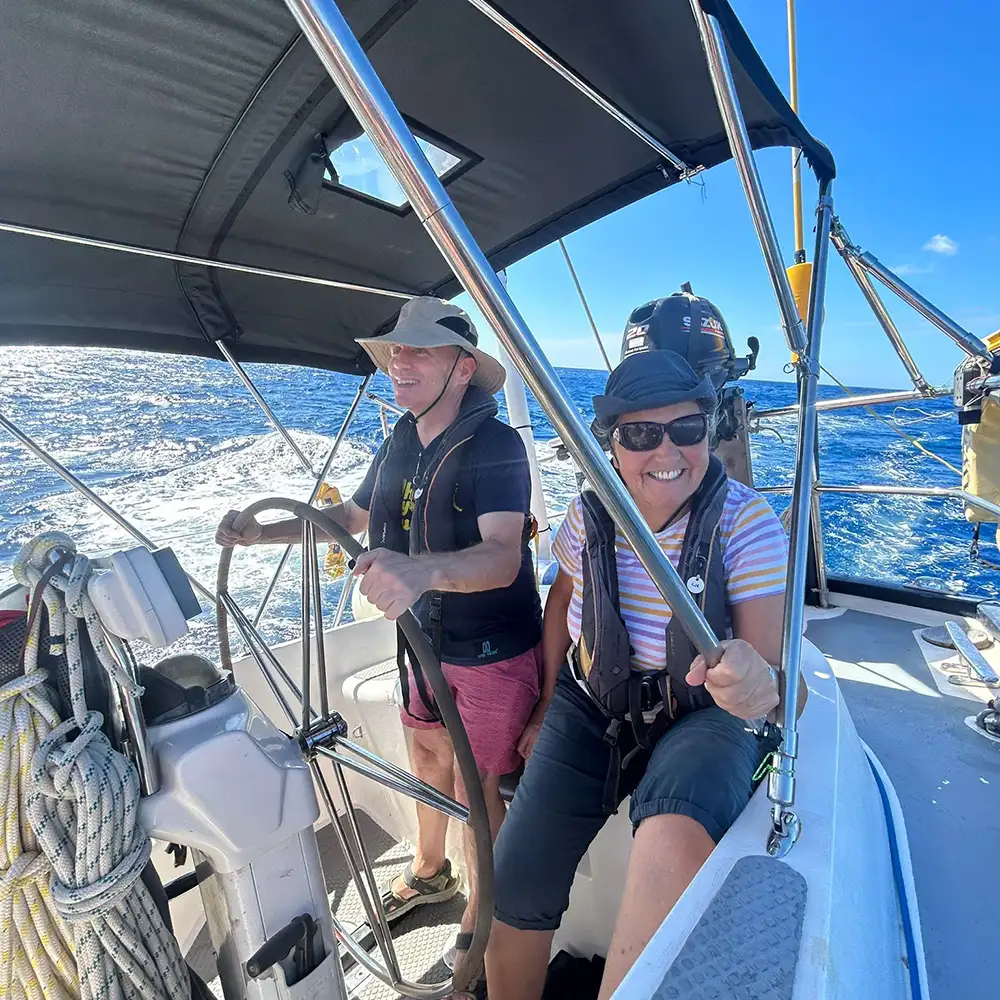
Long Island
Eighty miles from north to south, Long Island is a mix of two coastlines. Cliffs and crashing surf to the east, calm beaches and anchorages to the west. The island’s interior and shores hold plenty of discoveries. Dean’s Blue Hole, the world’s second deepest, drops to over 200 metres just a few steps from the sand. Its surface is a perfect circle of deep indigo, surrounded by pale shallows and limestone cliffs where locals and visitors leap into the water for the experience of a lifetime. Cape Santa Maria’s beach runs unbroken for miles, while smaller coves hide tidal pools and rock formations. Inland, Hamilton’s Cave hints at the Lucayan people who lived here centuries ago, and at Columbus Point the view over the ocean is spectacular.
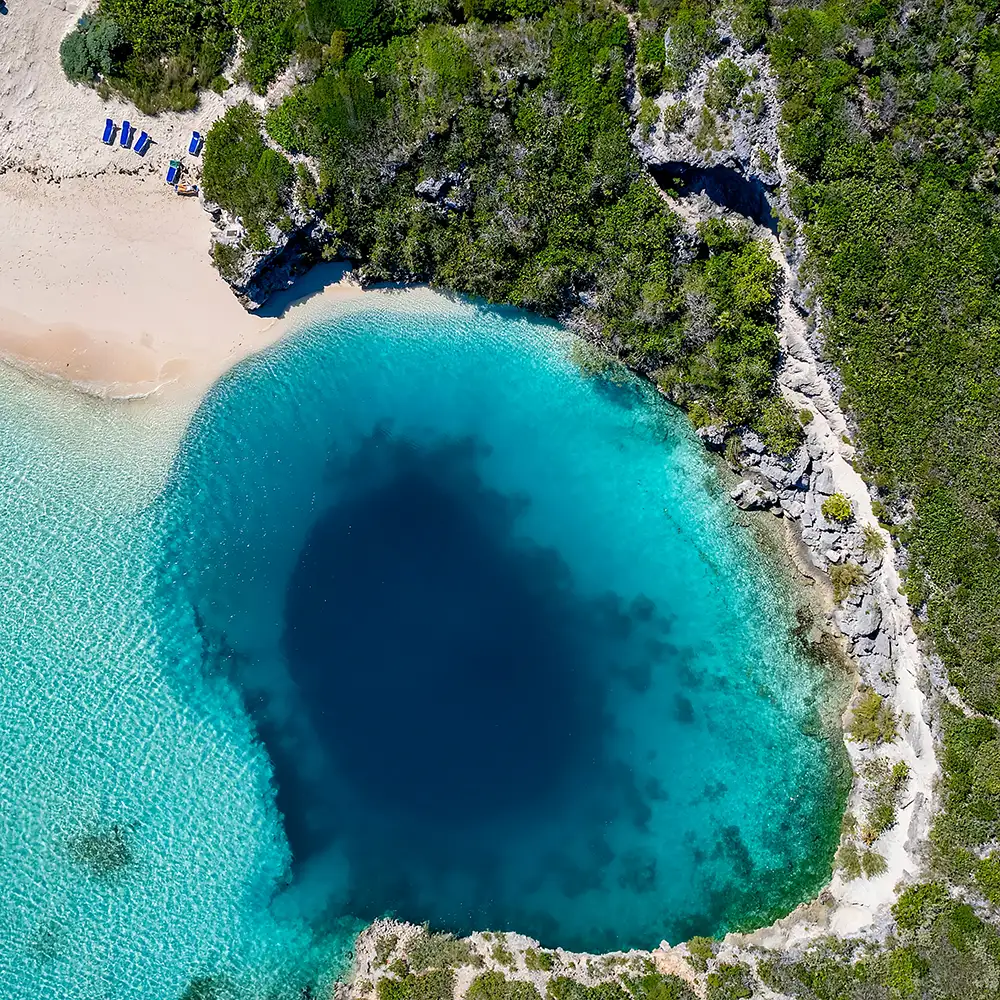
Exuma Cays
A string of 365 islands and cays stretching over 100 miles, the Exumas are where impossibly blue water meets a slower, friendlier pace of life. Great Exuma and Little Exuma are linked by a bridge, while hundreds of smaller cays scatter to the north, many only reached by boat. The main settlement, George Town, has everything from the lively Chat ‘n’ Chill beach bar on nearby Stocking Island to the Straw Market, where local craftspeople sell handwoven baskets and conch shell carvings. Exploring by boat unlocks the real treasures: Thunderball Grotto’s underwater caves, the famous swimming pigs at Big Major Cay, iguanas on Bitter Guana, and Compass Cay’s nurse sharks. On shore, beaches like Coco Plum and Hooper’s Bay offer long walks and the chance to see sea turtles in the shallows. Inland, small farming communities and historic sites such as the Pompey Memorial tell the story of the islands beyond their beaches.
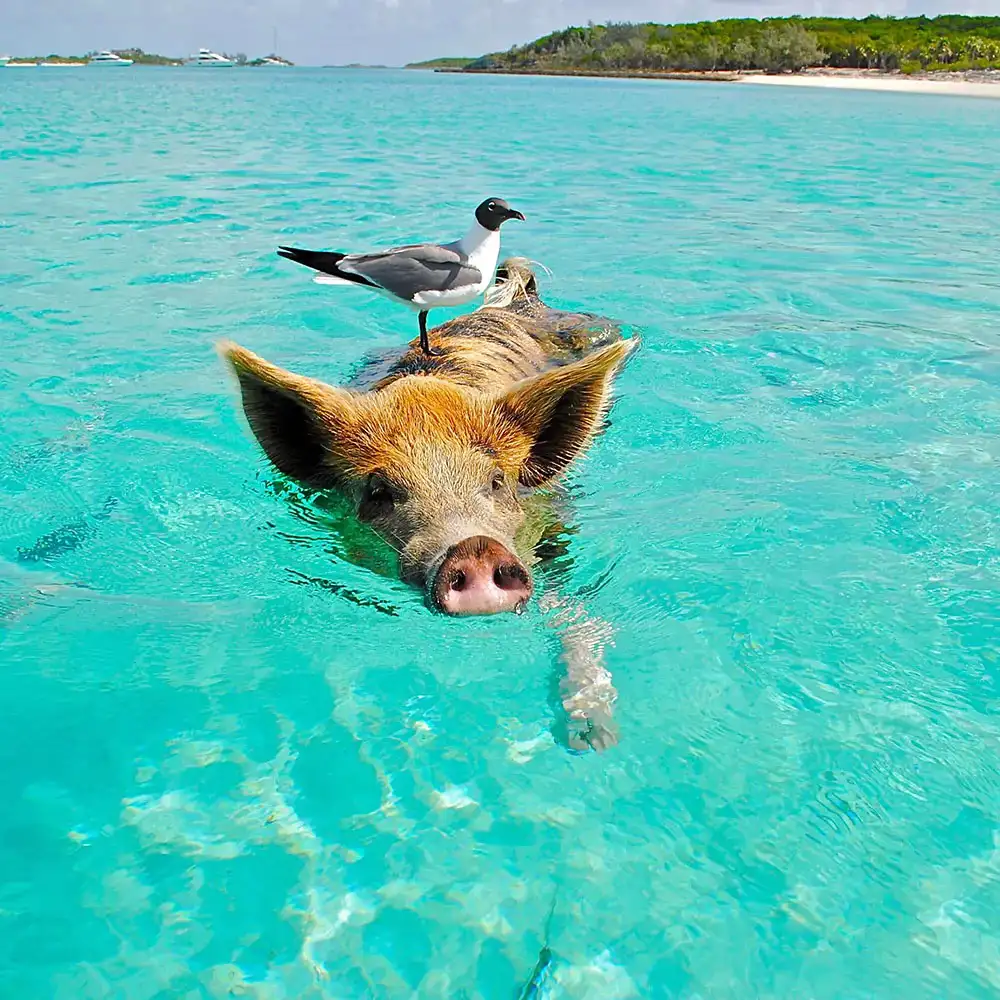
The Longer Passage
At least once on this trip, we’ll stretch out into a true offshore run, making 200 to 300 miles under sail, through the night and into the next day. It’s a magical experience in the warmth of the Caribbean, from the slow fade of the afternoon light and the sea changing character as the sun drops behind the horizon. As darkness falls, the deck is lit only by the glow of the compass and the sweep of the instruments. On a clear night, the sky above opens into a blanket of stars, with the Milky Way often amazingly sharp and clear. Every so often, the water itself lights up with phosphorescence streaming away in the wake, breaking into sparks with each splash against the hull. Through the watches, navigation is a quiet rhythm of plotting positions, checking sails, and scanning the horizon. In the early hours, the first glow of dawn builds astern until the sun breaks free of the horizon and you’re left with the satisfaction of having sailed through the night – a magical experience.